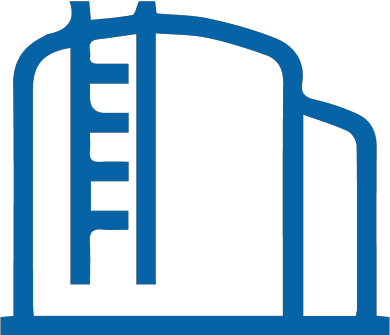what is
secondary containment?
Secondary containment refers to the actions and tools used to prevent leaks and spills in case of failure by primary containment, which is the basic infrastructure that is in direct contact with hazardous substances during regular operations. This can include tanks, pipes, drums, or other equipment that are used to store or transport hazardous chemicals, which depend on the substance in question and the specific operating environment. And like the selection of primary containment, secondary containment systems are chosen to best suit the needs of different hazardous chemicals and the nature of the environments in which they’re employed. Secondary containment can include containment pallets, drum trays, spill barriers, or any other means of effectively containing dangerous liquids that protect worker and environmental safety. These protective strategies are mandated by regulatory bodies like the Environmental Protection Agency (EPA) and Occupational Safety and Health Administration (OSHA), reflecting the importance of these reliable protective solutions.






































